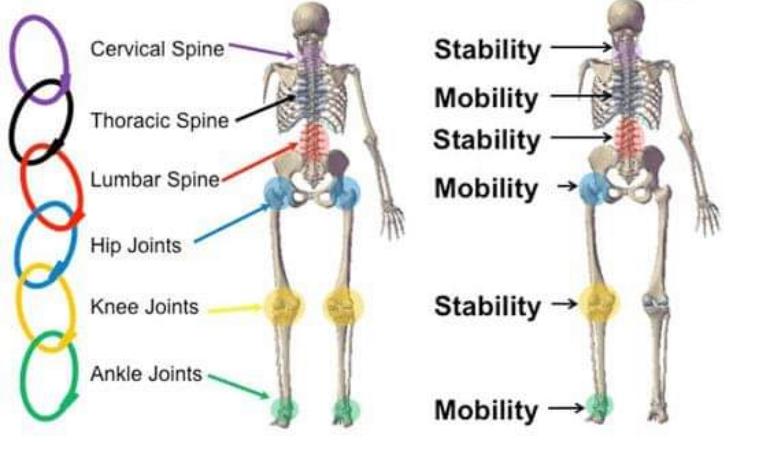A friend of mine just posted on a different forum a post about mobility, flexibility and stability of the spine and how that all plays together. So as it was not in English, I looked up a site that would provide a similar description in English.
I found it useful when considering my weaknesses in relation to strength, flexibility and mobility, and to u sets tame the reasons why I struggle still with things like lunges and what effect it has on the rest of my body.
In short, flexibility is how much your soft tissues can extend, e.g. stretch. So more to do with ligaments and muscles. Mobility is your joint's ability to move freely through a full range of motion, so more to do with the joint itself. Stability is how well the soft tissues support joints for any movements.
But here in more detail:
- - - - 8< - - - - 8< - - - - 8< - - - -
Copied from fix.com/blog/flexibility-mo... :
Flexibility
Flexibility is the absolute range of motion in a joint or system of joints, and the length of muscle that crosses the joint involved. It directly correlates with range of motion and mobility, but does not directly correlate with strength, balance, and coordination. Range of motion is the distance and direction the joint can move, while mobility is the ability to move without restriction.
Mobility
Though flexibility and mobility sound similar, they are not interchangeable. Mobility within a joint is the degree to which the area where two bones meet (known as an articulation) is allowed to move before restricted by the surrounding tissue such as tendons, muscle, and ligaments. Think of mobility as the range of uninhibited motion around the joint.
A good level of mobility allows a person to perform movements without restriction, while a person with good flexibility may not have the strength, coordination, or balance to execute the same movement. Good flexibility does not always denote good mobility.
Stability
Mobility relates to movement while stability relates to control. Stability is defined as the ability to maintain control of joint movement or position by coordinating actions of surrounding tissues and the neuromuscular system. Joint stability depends largely on the shape, size, and arrangement of the articular surfaces (the surfaces on joints and cartilage where the bone makes contact with another bone), the surrounding ligaments, and the tone of the surrounding muscle. Injuries including ligament tears and sprains can often lead to stability issues in the joint.
Connecting the Movement Dots
Though maintaining flexibility is important, flexibility alone cannot prevent or heal injuries. A person can be very flexible, but lack mobility or stability within a joint. Rather than consider one more important than the other, think of flexibility and mobility as equal partners in creating sound movement patterns.
Gray Cook, physical therapist and author of Movement: Functional Movement Systems: Screening, Assessment, and Corrective Strategies, suggests we view the body on a joint-by-joint basis to create the best movement patterns. When viewing Cook’s approach from the top down, we can see how joints can stack on top of each other, alternating from stability to mobility.
- - - - 8< - - - - 8< - - - - 8< - - - -
Source: Fix.com Blog
